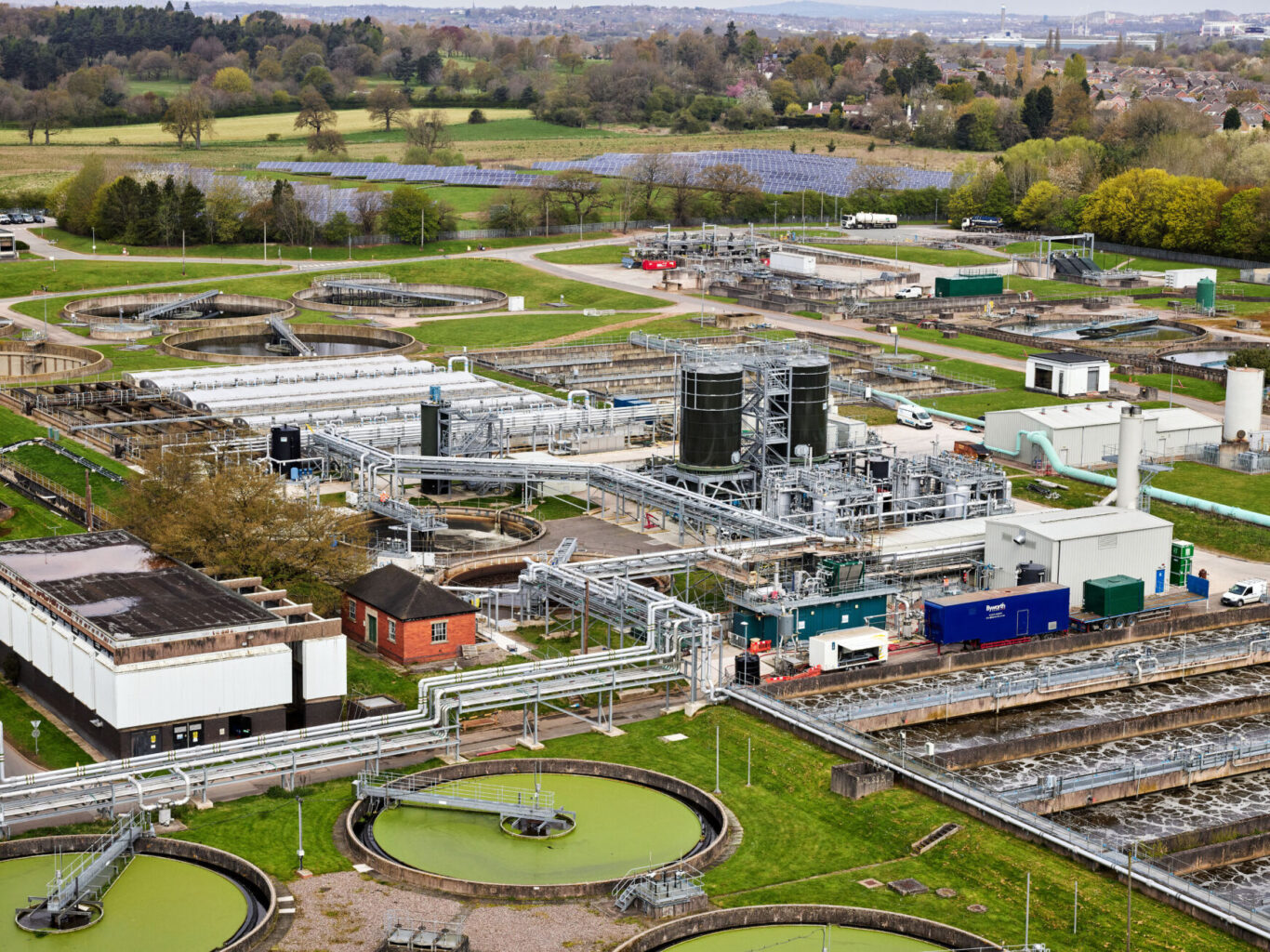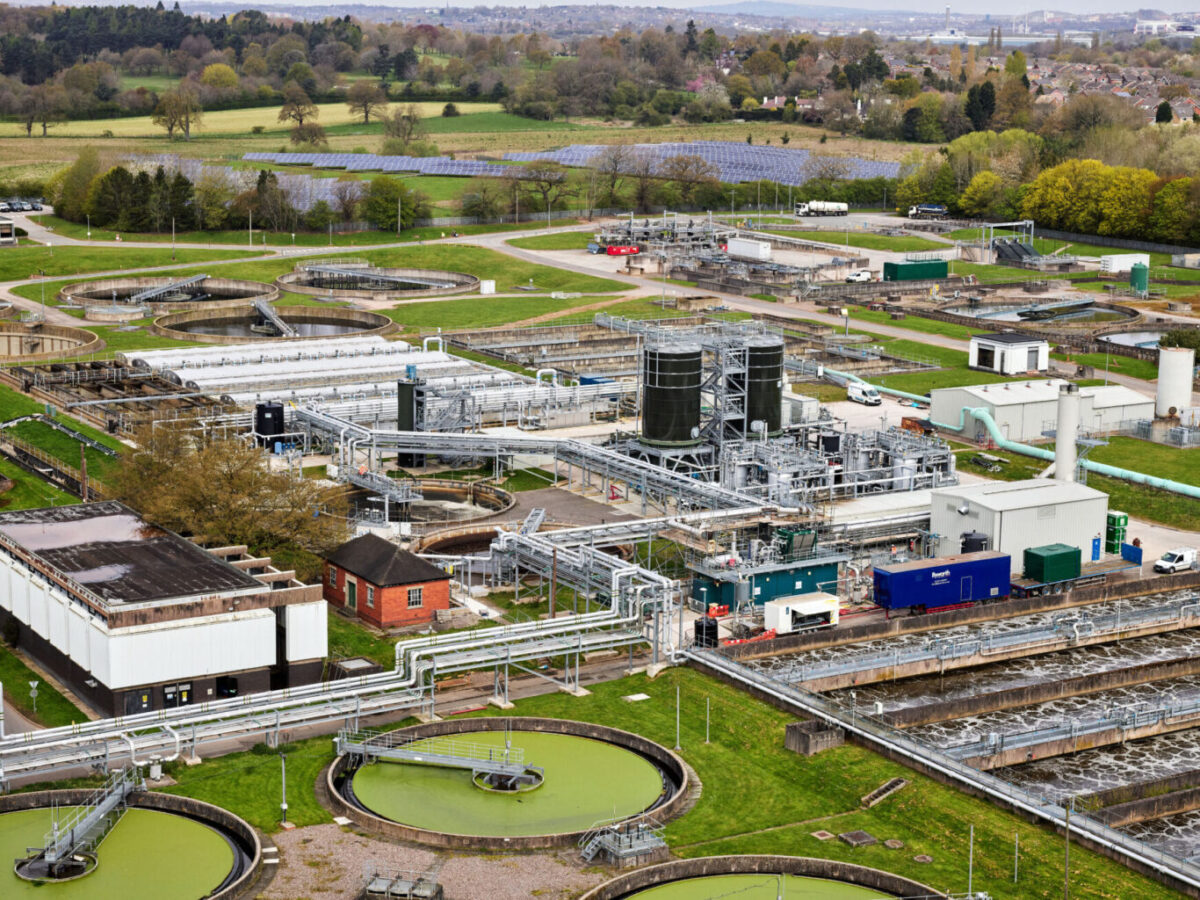Severn Trent secured £40 million of investment to transform the Strongford wastewater treatment plant into a Net Zero Hub (NZH). As a first full-scale emissions reduction blueprint, the NZH plans to integrate world leading greenhouse gas (GHG) monitoring, technological innovation and a Digital Twin in pursuit of net-zero operational carbon emissions by 2030. The complex design and delivery of the NZH has been carried out collaboratively between Severn Trent, JN Bentley, and AtkinsRéalis, simultaneously delivering five full-scale emissions reduction technology implementation designs.
Partnering with Suez, a first-of-its-kind technology was developed to capture and treat nitrous oxide emissions. The ‘cover and treat’ technology (Actilayer) has now been taken from proof of concept to full-scale installation at the NZH via intensive research and development at our Resource Recovery and Innovation Centre (R2IC). The Actilayer system has been deployed using different configurations, and coupled with real-time measurement of nitrous oxide emissions, it will allow us to prove its emissions reduction effectiveness.
In terms of treatment of wastewater (bio)solids, both a proprietary upgrade to existing anaerobic digestion treatment and downstream vacuum degassing will be implemented to minimise residual biomethane production, reducing emissions and recovering additional renewable energy.
The sequential deployment of these compatible technologies, along with advanced monitoring systems targeting nitrous oxide and methane, will enable Severn Trent to evaluate the effectiveness of the NZH as a technological blueprint for emissions reduction. The use of the Digital Twin will optimise performance post-commissioning.
Three Winning Facts:
- Pioneering technologies – UK’s first full scale implementation of CIRTEC Cellulose recovery. World’s first implementation of SUEZ Actilayer and EPHYRA plug-flow digestion retrofitted alongside thermal hydrolysis pre-treatment and ELOVAC vacuum degassing.
- Novel Emissions Monitoring – The integration of advanced greenhouse gas monitoring systems and the development of a Digital Twin for precise simulation and process optimisation demonstrates a proactive approach to overcoming financial barriers associated with carbon reduction technologies.
- Advanced construction techniques – The project utilised 3D-printed concrete structures, developed between JN Bentley and Hyperion Robotics, reducing concrete usage by up to 50%.


